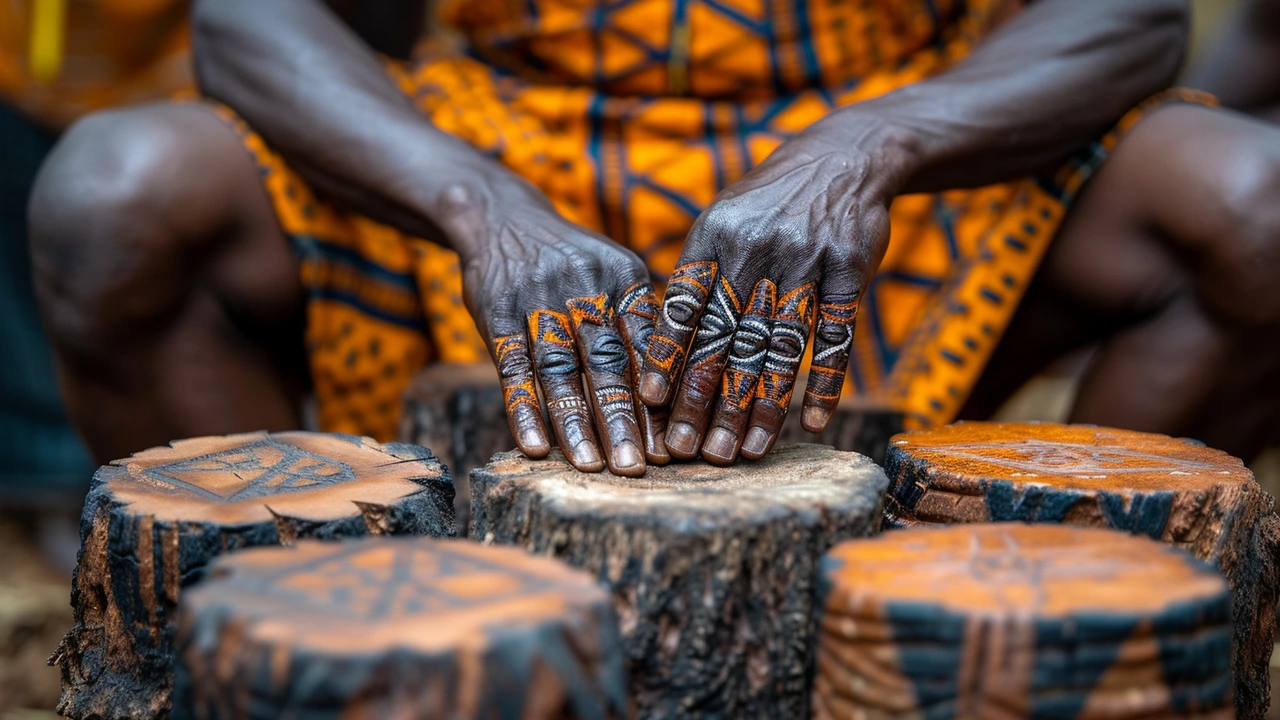Historical Roots of Rungu
The journey into the world of Rungu begins with its origins, deeply rooted in the soils of African heritage. Traditionally, Rungu is a wooden throwing club or baton, deriving its name from the languages spoken in the East African region. Historically, it was not merely a weapon but a symbol of power and authority among tribal chiefs and warriors. The making of Rungu, involving specific types of wood and intricate craftsmanship, has been passed down through generations, reflecting the rich cultural fabric of African societies. Each Rungu tells a story of its maker, the warrior who wielded it, and the community it served.
Cultural Significance Across African Societies
Diving deeper, Rungu's significance varies widely among different African cultures. In some communities, it is a ceremonial insignia used in dances and rites of passage, symbolizing the transition from youth to adulthood or marking victories in battle. In others, it is a tool of leadership, representing authority and the responsibility of guiding the community. Such diversity in symbolism underscores the dynamic cultural landscapes of Africa and the multifaceted roles traditional objects play in societal functions and spiritual beliefs. This complexity adds layers to the understanding of Rungu beyond its physical form.
Traditional and Modern Uses
Reflecting on its uses, Rungu's role has evolved from a primary weapon of warfare to a multifunctional object. Traditionally, its efficiency in close combat and hunting made it indispensable. Today, while its practical application as a weapon has diminished, Rungu finds its place in sports, cultural performances, and ceremonial events, illustrating the seamless blend of tradition and modernity. Moreover, it has gained popularity internationally as a unique piece of African artwork, highlighting the global appreciation of cultural artifacts and their stories.
The Craftsmanship Behind Rungu
The art of making Rungu is a testament to the craftsmanship and artistic vision of African artisans. Selecting the right wood, shaping it to perfection, and sometimes adorning it with carvings or embellishments, each step in the creation of Rungu is steeped in tradition and skill. This process not only preserves ancient techniques but also allows for the expression of individual and collective identities. The continued practice of making Rungu by hand in an age of mass production speaks volumes about the commitment to cultural preservation and the value of artisanal craftsmanship.
Symbolisms Attached to Rungu
Exploring the symbolisms of Rungu reveals a rich tapestry of meanings and interpretations. In many tribes, it is a symbol of valor, strength, and the warrior spirit, echoing the valorous deeds of past heroes. For community leaders, it embodies wisdom, justice, and the heavy burden of leadership. And in ceremonial contexts, it represents unity, tradition, and the continuity of cultural narratives. These symbolisms are not static; they evolve with time, reflecting the changing values and circumstances of the communities that hold Rungu dear. Such dynamic interpretations highlight the living nature of cultural traditions.
Rungu in Contemporary Cultural Expression
Today, Rungu remains a vibrant element of cultural expression, illustrating the resilience and adaptability of traditional symbols in the modern world. Whether through its use in cultural festivals, the international interest it garners as a piece of art, or its role in educating about African heritage, Rungu continues to inspire and provoke thought. For those of us far removed from its traditional context, it offers a window into the diverse cultural landscapes of Africa and serves as a reminder of the importance of preserving and honoring our global cultural heritage. As we celebrate Rungu, we celebrate the rich tapestry of human creativity and the enduring power of cultural symbols to unite, inspire, and educate.

